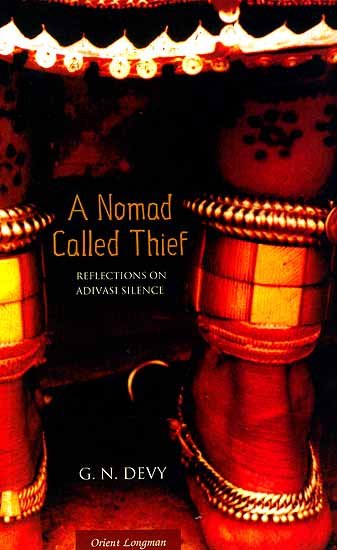Government documents apply various labels besides “Scheduled Tribes” and “tribals”:
Hill Tribes, Nomadic and Semi-Nomadic Tribes, Forest Dwellers, Indigenous Communities, Aborigines, Backward Tribes, Backward Classes, Tribal Settlers, Original Settlers, Primitive Tribes, and Denotified Tribes.

Ādivāsi [ādibāsi] may be used in accordance with local conventions; and increasingly so for official purposes (e.g. in “Conserving Tradition and Practices of Adivasi Communities in India” published on NIDM.gov.in); Dr. Ivy Hansdak clarifies:
“Adivasi – which is derived from Sanskrit – is applied to the dark-skinned or Austro-Asiatic indigenous groups of India (usually those from Eastern India). It is a commonly-used term in Jharkhand, Bihar, West Bengal and Odisha. It is also used by the local Mongoloid tribes of North Eastern India for the migrant workers who were brought in as indentured labourers to work in tea plantations during the colonial period. ‘Tribal’ is a very broad term in the English language and includes all the different indigenous groups of India. The terms ‘indigenous’ and ‘aboriginal’ are not used often as the government claims most groups are indigenous in India. ‘Denotified Tribes’ is only used for those nomadic tribes who were notified as ‘criminal tribes’ during the British Raj [colonial rule]; later they were ‘denotified’ but still bear the stigma.” (emails dated 2020 & 2023)
Many ‘Denotified Tribes’ continued to suffer displacement/dispossession/enslavement of Nomadic, Semi-Nomadic and Denotified Tribes after Independence. The exploitation and encroachment on tribal/forest lands for the purpose of commercial timber extraction, (eco-)tourism and plantations were often found to be illegal, polluting and – in the case of state participation – declared unconstitutional by the Supreme Court of India. Such human rights violations led to the passing of legislation known as Forest Rights Act in 2006.

Reflections on Adivasi Silence and Voice by Ganesh [G.N.] Devy | Publications >>
After Independence, the erstwhile aborigines were classified as scheduled tribes, the untouchables were classified as scheduled castes and others included in the backward classes. Although, many of the denotified, nomadic and semi-nomadic tribes are spread among SC/ST/OBC, many are still not classified anywhere and have no access to socio-economic benefits, whether education, health, housing or otherwise. […]
Except a few states like Maharashtra, Gujarat, etc, some of these communities figure in various classifications in the states such as Backward Tribe (Puducherry), Most Backward Classes (Tamil Nadu), Extremely Backward Classes (Bihar), “original settlers” in Arunachal Pradesh, Primitive Tribes (Jharkhand/ Odisha), Hill Tribes (Assam) etc. In some states they are called “tribal settlers”. In some states they are called “hidden tribes” etc. […]
There are many anomalies in terms of identification of these communities, from state to state. Many people also do not know what is denotified tribe and which authority is looking after their grievances. Recently, this Commission made a recommendation to the Government of India to write to all state governments to form a district-level Grievances Redressal Committee under the District Collector to hear the grievances of these communities/groups/tribes. | Read more >>
Source: 2016 Report of the NCDNT [National Commission for Denotified, Nomadic and Semi-Nomadic Tribes], quoted by Bibek Debroy in “An unfortunate legacy” (Indian Express, 5 January 2017)
Address: https://indianexpress.com/article/opinion/columns/crime-criminal-act-racial-discrimination-non-bailable-offence-criminal-tribes-act-an-unfortunate-legacy-4459258/
Date Visited: 12 October 2020
Today, most tribals are being clubbed together with the scheduled castes (SC or dalit) with whom they share reservation in college admission and jobs. In the government documents, ‘SC/ST‘ are usually written together. The certificate that is issued to those claiming reserved status is also called ‘caste certificate’.” – Dr. Ivy Hansdak (email dated 26 April 2023)
“Since the Indian Constitution uses the term ‘Scheduled Tribes’ or ‘tribals’ to refer to indigenous communities in India and the colloquial reference used by several indigenous communities themselves is ‘adivasis’ these two terms shall be used interchangeably. […]
For strategic planners, forests are ‘an administrative category implying a desired land use’ whether or not trees are included, but it is useful in making claims to ‘extend the control of the forest service’. […]
To tribal people, forests involve habitat and identity and are thus inseparably linked to their lives and livelihoods. Because of this reality, several inter-disciplinarians see forests as something linked to human rights for indigenous communities.
Source: “An analysis of the impact of the Forest Rights Act (2006) in three states of India” by Rebecca S . David (MPhil University of Cambridge, UK, 2014), p. 1
https://www.academia.edu/30648733/
Date accessed: 11 October 2020
Under the [FRA] law, forest dwellers can apply to state governments for either individual or community forest rights – which means they can take ownership of the process of protecting and conserving forests in their areas. They can also gather and sell minor forest produce such as tendu leaves or bamboo, which was an illegal activity before the law was enacted. However, states have not been particularly proactive about implementing these rights. [E]ven as Maharashtra is foremost in implementing community forest rights, it is also slowly attempting to reverse this with new forms of forest management. | Read more >>
Source: Mridula Chari in (Scroll.in, 9 July 2017)
https://scroll.in/article/843046/ten-years-of-forest-rights-act-maharashtra-tops-in-implementation-but-credit-goes-to-one-district
[Bold typeface added above for emphasis]
Learn more: “Who are Scheduled Tribes?” & Demographic Status of Scheduled Tribe Population of India (Census figures 2011) >>